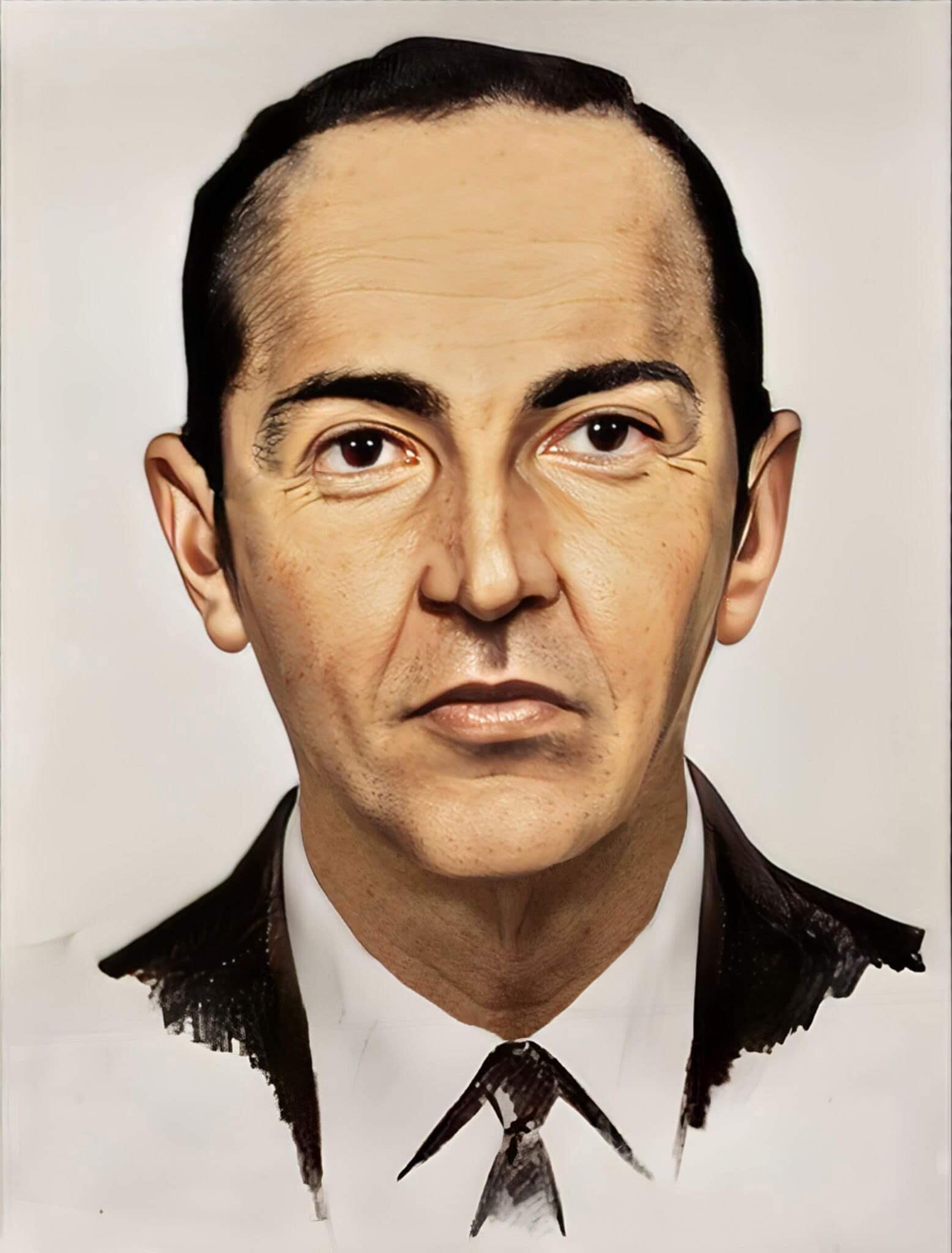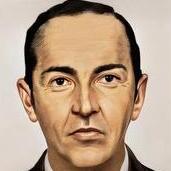I believe we've already explained this, but I'll explain it again. Eric indeed found the 3 possible alloys. He gets credit for that. They do stick out like a sore thumb on the spreadsheets. He came up with Rem-Cru on his own somehow. He'd have to tell you how he did that. I'm not even sure how he did because he's a guy who works alone. However, for our part, we took those particles to metallurgists who led us to several places, one of which eventually was Rem-Cru. We did not begin at Rem-Cru though. We learned that the places that were experimenting with TiSb alloys in the 1950's were originally Bureau of Mines and Battelle Memorial Institute. We built a spreadsheet for each of these places of as many of their R&D guys as we could find and then attempted to vet those people, looking for military experience and ties to the PNW. We weren't able to find any. But that seemed like a dead end anyways because the tie wouldn't have been around these 1950's raw TiSb alloys since it came from the 60's.
We then decided to look for patents that might reference TiSb alloys. We located 1,400 patents 1950 through 1959 that mention both titanium and antimony somewhere in the patent (usually in a long list of elements but almost never adjacent), and around 3,500 in the 1960's. Virtually 100% of these are for pigments and chemicals, never alloys. In fact, the only two places that actually have patents for TiSb alloys are Rem-Cru/Crucible and Sprague. You can search the US Patents yourself and for titanium antimony alloy it's literally just those two. FWIW, Vordahl is the only Crucible employee who is listed on those patents (there are 13 of them in total, but only one in the "tie era"). He apparently learned the skill from a collaboration with Battelle. TiSb is apparently an extremely difficult and also inefficient thing to alloy, which is why it never caught on and was purely experimental. TiSn alloys essentially give you the same advantages as TiSb but it is much, much more efficient and easy to do, which is why the industry used it instead of TiSb. You can see below a query on the metallurgy reddit from Chaucer and the befuddled response he received.
So we then narrowed our focus on seeing if anyone stood out in the R&D labs for Rem-Cru/Crucible and Sprague. We built spreadsheets for those as well. You can see below a sample of the first page of our Rem-Cru sheet that we built. FWIW, John L. Sprague from Sprague Electronics would have made a damn good Cooper if you were holding a Cooper lookalike contest. But he of course was just the CEO of Sprague and wasn't a grunt metallurgist working in a lab.
So we kept vetting all these names we could find at Rem-Cru and Sprague, looking for military experience and/or ties to the PNW. We used an expensive software that I have access to in order to check for these things and also looked up their obituaries and military records for height/eye color/hair color/build, etc. on Fold3. Not surprisingly, very few of these nerds had real military experience. They were used in wartime industries or recruited to work on various things for the war effort, like Vordahl on the Manhattan Project. To our surprise, Vordahl was the only one who was from the PNW, but he would have been 58 during NORJAK, so we sorta skipped over him. We kept digging and digging and came up with nothing that would make any of these individuals stand out as unique. So we eventually decide, what the hell, lets look at Vordahl anyways. The 1965 patent is, after all, his sole invention.
So reluctantly, due to age, we decided to do a deeper dive into Vordahl and saw that not only was he from Washington, but he was actually living there at the time. Well, that's neat, but doesn't mean too much. What about his size? Measured in barefeet for the draft at age 26 he was 5'10 1/2. Good size for anyone wanting to be Cooper IMO. Yeah, well, that's all fine and good, but what kind of person was he? Were he and the Mrs. akin to Ward and June Clever? Oh no, hell no they were not. I'm not sure how many couples in the 1960's and 1970's caused people in their town to make public complaints against them accusing them of Paganism. He seemed to have a narcissistic and often angry personality. He seems like the sort that would have perhaps been upset that he received no public recognition for some of his notable contributions to aerospace since all of his marvelous inventions were assigned and he received no royalties (93% of the alloy coating the SR-71 is one of his). He appeared to be such a miser about certain things that instead of buying his children contacts in the 1960's, he literally made them contacts in his spare time. He had some fascination with optics and would build his own telescopes, many of which are still on the family property. There are other troubling aspects of his personality that, out of respect for the family, we are not publicly discussing as of now. He ended up dying of a rare neurological disease that, among other things, effects the part of the brain that controls impulsivity. Could he have been already suffering from this? Something for us to consider at least.
Was he an arthritic broken down old timer? Quite the contrary. He appeared to be a very good athlete. When doing deep dives on him, many of the references you'll come across are about him competing (and sometimes winning) amateur tennis and golf tournaments. According to one of his grandchildren, he was an obsessive golfer and played tennis or golf everyday that he could. We have him still playing in senior tennis tournaments into his 70's. He also wrote about jogging and running during the 1960's. I think we all know that wasn't exactly a common practice in those days. So he would have been in good shape for a man his age. Drinker and smoker? We literally have a video of the man drinking and in the same video there appears to be a lit cigarette set in an ashtray in front of him. He also made his own wine, fwiw.
Well what else? Any ties to Boeing? Sure, he consulted with Boeing many, many times over the previous 15 years before NORJAK. Our source with access to Boeing records has him many times consulting for Crucible and TIMET with Boeing. We have him on the floor of Boeing as late as 1970 consulting on the SST. What was he doing in 1971? He appeared to still be a consultant for Crucible and also for TIMET, which was located in Henderson, NV. He maintained a home in Henderson from 1965 until his death. He appeared to snowbird in the winter time and relocate to his home in NV during the rough winters in northern Washington. His exact job title is unclear, but we have him working at the TIMET lab in Henderson in the 1960's and also again in the 1970's as a consultant. The last patent of his life, incidentally, was published in 1971. His "home laboratory", so to speak, was at the TIMET plant in Henderson, which was only 2 miles from his home. This plant closed in August 71 due to the aerospace bust and laid off all of its workers. The research manager there, as we all know, was a guy named Don Cooper. They opened back up in mid 72.
It should be noted that one of the very last things we knew about Vordahl was what he looked like. We were well over a month into researching him that we finally saw what he looked like as an adult. He was Mr. "not appearing in this photo" guy throughout much of his life. It wasn't until we had already contacted the family and held discussions with them that we received an actual clear photo of his face. It should also be noted that we've never encountered a single word of objection from his family. Literally none of them have said "no way" or anything like that. They're merely intrigued. They knew he was a unique individual and just want to learn more.
Does any of this make him Cooper? Absolutely f**king not. Odds are astronomically overwhelming that he ISN'T D.B. Cooper. I recognize that. I'm not a fool (even though many of the people on this site may think that about me) nor am I some gullible idiot. However, for an outside-the-box Cooper suspect, I think it's worth looking at an anti-social, often hostile, narcissistic, genius inventor, with ties to aviation, with ties to the SST bust, who was living in one of the most isolated communities in Washington in 1971, and who looks so similar to the sketches.
Our team spent months and months seeking the opinions of metallurgists, authors on metallurgy, other scientists, and making contacts with individuals at Boeing, etc. We didn't just pull Vordahl out of a hat. We had already vetted like 200 different individuals at various companies before we dug deeper into him because, as previously stated, we had previously set him aside as we figured his age put him out of contention (and perhaps it still does). Again, we didn't even know what the guy looked like until well into our investigation of him. He could have looked like Chris Farley for all we knew and that would have been the end of it.
Three of us busted our asses on this every day for four or five months. That's well over a year of combined time researching this to try and get to Vordahl. Eric will openly admit that the way he found Petersen was he contacted an older guy who used to be a supervisor there. He was actually one of only two guys that we vetted who was still alive and we actually gave the contact info to Eric. He called and asked the guy "who was someone you worked with who was about 6'1 and was around 45-50 in 1971. The old guy said "that sounds like Petersen". That's how Eric found Petersen, and hey, maybe he got super lucky.
However, as you can see, our research methods to find our suspects were obviously night and day, so please, as fellow Cooper researchers, do not disrespect our efforts by claiming that we half assed this. We've spoken with numerous experts. We've collectively spent hundreds of hours and financial resources looking into this lead on the off-chance that maybe, just maybe, it might produce something.
And yes, of course this is based on a hypothesis. It's no different than finding a suspect based on what is arguably a fictional novel or making an assumption that this individual came from this or that particular commando unit. 51 years later we are all kind of grasping at straws here.
It's just a theory based on something that may or may not turn out to be true, but we chased a lead and so far this is what we've come up with after doing months of due diligence. So please chill it with the aspersions claiming that we half-assed this TiSb theory. We absolutely did not. If you want to attack EU for being given a random name and running with it, then sure, that's a very valid criticism. But that criticism should not be leveled against us.
We understand the flaws of Vordahl. He's arguably outside the age range. We haven't found any parachuting experience as of yet. Why would he commit aircraft piracy? Etc.



